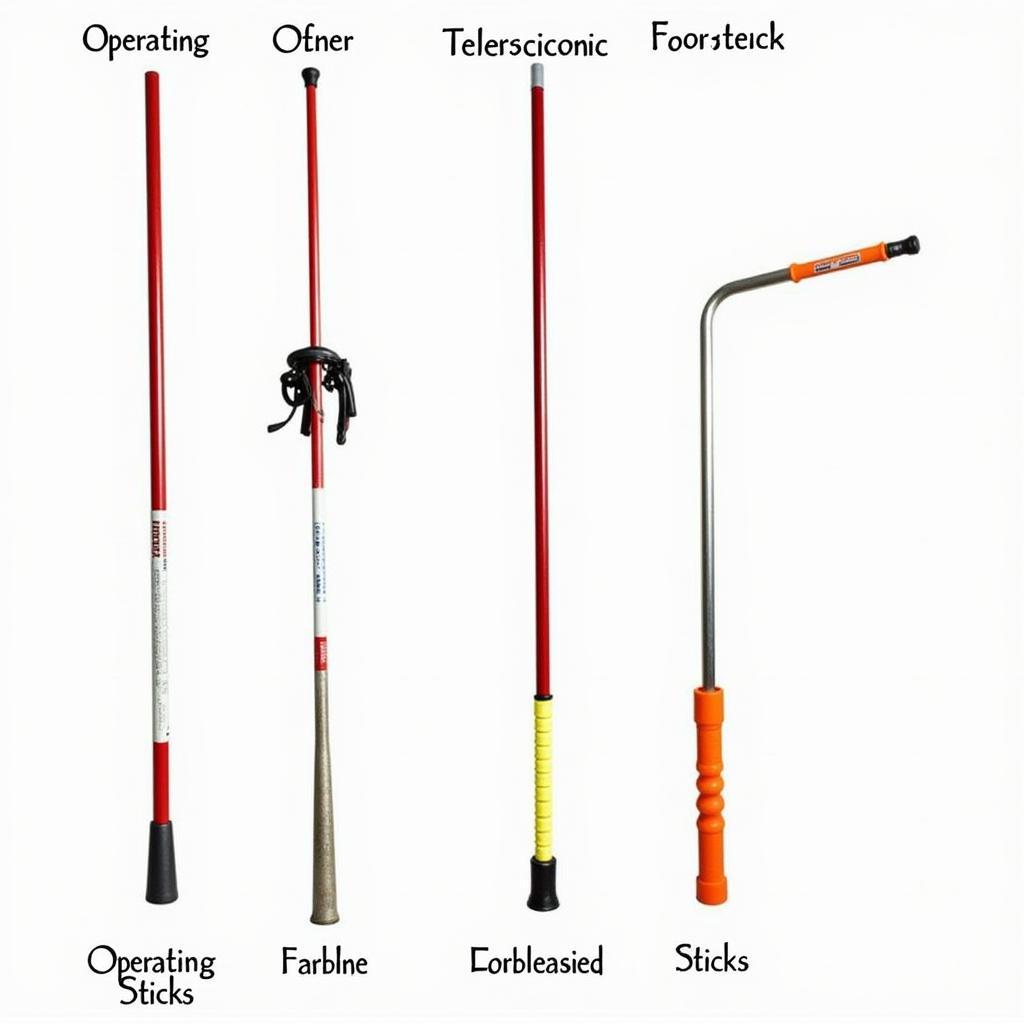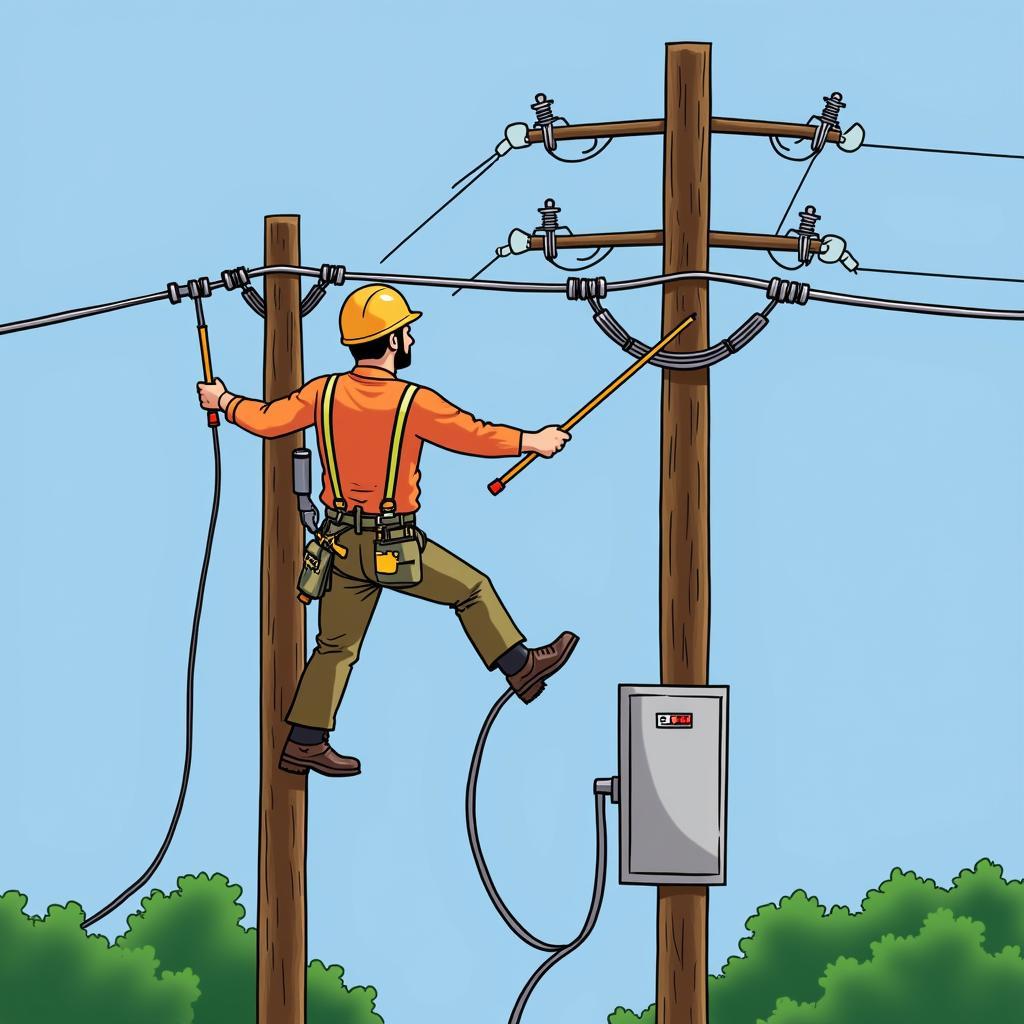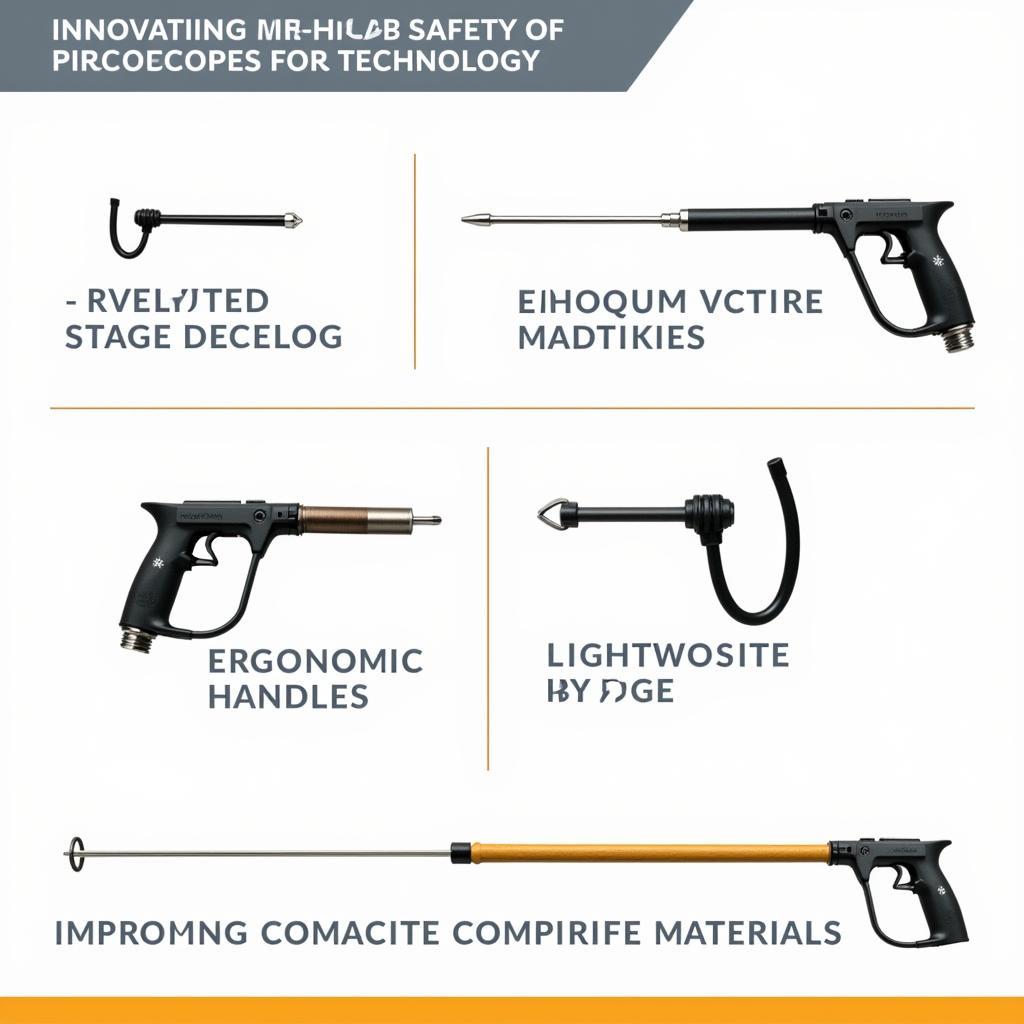Lineman Hot Stick: Your Essential Guide
December 30, 2024Lineman Hot Sticks are crucial tools for electrical line workers, providing a safe and effective way to handle energized power lines. These specialized tools are designed for various tasks, from opening and closing switches to replacing fuses and installing equipment. Understanding their functionality, types, and safe operating procedures is essential for anyone working with high-voltage electricity.
Understanding the Importance of Lineman Hot Sticks
Hot sticks act as an extension of a lineman’s arm, allowing them to work on live power lines without direct contact. This minimizes the risk of electrical shock and arc flash, two significant hazards in the electrical industry. The insulating properties of the hot stick prevent the flow of electricity through the tool and to the operator, ensuring safety during maintenance and repair operations.
Types of Lineman Hot Sticks
Various types of hot sticks are available, each designed for specific tasks. Some common types include:
- Operating Sticks: Used for operating switches, disconnectors, and other equipment.
- Telescopic Sticks: Extendable for reaching greater heights and distances.
- Non-Conductive Fiberglass Sticks: Offer excellent insulation and durability.
- Live Line Tools: Designed for specific tasks like installing bird diverters or repairing damaged lines.
 Different Types of Lineman Hot Sticks
Different Types of Lineman Hot Sticks
Safe Operating Procedures for Lineman Hot Sticks
Using hot sticks safely requires proper training and adherence to strict procedures. Key safety practices include:
- Inspection: Always inspect the hot stick for any damage or defects before use.
- Proper Attire: Wear appropriate personal protective equipment (PPE), including insulating gloves and safety glasses.
- Grounding: Ensure proper grounding procedures are followed before working on any energized lines.
- Distance: Maintain a safe distance from other energized lines and equipment.
- Weather Conditions: Be aware of weather conditions, as rain or humidity can affect the insulating properties of the hot stick.
 Lineman Demonstrating Safe Hot Stick Operation
Lineman Demonstrating Safe Hot Stick Operation
Choosing the Right Lineman Hot Stick
Selecting the appropriate hot stick depends on several factors, including the voltage level, the task being performed, and the working environment. Consulting with experienced professionals and manufacturers is essential for making informed decisions.
What are the key features to consider when choosing a hot stick?
Key features to consider include the material, length, weight, and the specific tools or attachments available.
How do I maintain my hot stick?
Regular cleaning and inspection are crucial for maintaining the effectiveness of a hot stick.
The Future of Lineman Hot Sticks
Technological advancements continue to improve hot stick design and functionality, enhancing safety and efficiency in the field. New materials and innovative features are constantly being developed to meet the evolving needs of the electrical industry.
“Choosing the right hot stick is paramount for safety and effectiveness,” says John Smith, a veteran lineman with over 20 years of experience. “It’s an investment in both the worker’s well-being and the quality of the job.”
 Advanced Lineman Hot Stick Technology
Advanced Lineman Hot Stick Technology
Conclusion
Lineman hot sticks are indispensable tools for safely working on energized power lines. Understanding their types, functionalities, and safe operating procedures is critical for protecting electrical workers and ensuring the reliability of the power grid. By prioritizing safety and investing in high-quality equipment, linemen can continue to power our world while mitigating risks.
FAQs
- What is the primary purpose of a lineman hot stick? (To provide a safe distance between the lineman and energized power lines.)
- What materials are hot sticks typically made of? (Fiberglass, epoxy resin, and other non-conductive materials.)
- What are some common types of hot sticks? (Operating sticks, telescopic sticks, and live line tools.)
- What safety precautions should be taken when using a hot stick? (Inspect the stick before use, wear proper PPE, and maintain a safe distance from energized lines.)
- How do I choose the right hot stick for a specific task? (Consider the voltage level, the task, and the working environment.)
- How do I maintain my hot stick? (Regular cleaning and inspection are crucial.)
- What are some recent advancements in hot stick technology? (Integrated voltage detectors, ergonomic handles, and lightweight materials.)
For further support, please contact us at Phone: 091511711713, Email: [email protected] or visit us at Block 3, Binh An Hamlet, Phu Thuong, Viet Nam, Binh Phuoc 830000, Viet Nam. Our customer service team is available 24/7.